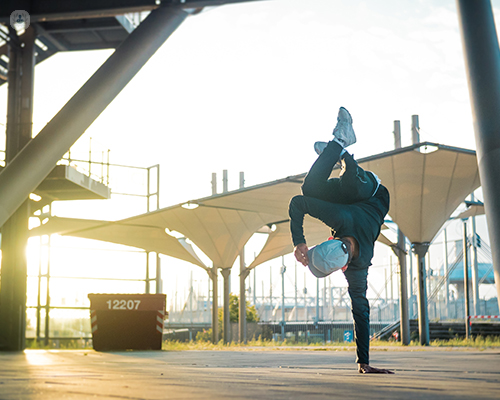Scapholunate ligament injuries and how to treat them
Written by:The scapholunate ligament is one of the carpal ligaments in the wrist joint, allowing for the control and stability of the scaphoid and lunate bones. This ligament provides strength, allowing the wrist to withstand load without giving way. It also allows for flexibility and range of motion. However, the scapholunate ligament is the most commonly injured carpal ligament of a hand injury.
Leading orthopaedic surgeon in Droitwich, Birmingham and Worcester Ms Anna Moon provides a detailed take on this injury in this comprehensive article. Read on to find out more.

What is a scapholunate ligament injury?
A scapholunate ligament injury occurs when the wrist is overloaded and hyperextended and will often occur when a person falls to the ground and uses their palms to catch their fall. This sort of action can cause the scapholunate ligament to sprain, partially or completely tear. Additionally, a wrist fracture will often accompany a scapholunate ligament injury.
What are the symptoms of a scapholunate ligament injury?
The symptoms of a scapholunate ligament injury include pain in the middle of the wrist, particular when stretching it, as well as some swelling. It is also common to experience a loss of strength when the elbows are extended and a general lack of mobility of the wrist joint. Injuries can vary in severity and the extent of the injury will determine the urgency or need for surgical treatment.
Recent studies have shown that the scapholunate ligament has interior microscopic corpuscles called mechanoreceptors that are capable of controlling the wrist and preventing the scaphoid and the semilunar bones separating when the wrist is moving or supporting weight. This explains why patients with scapholunate ligament injury experience very little discomfort. Additionally, recent biomechanical studies of neuromuscular control of the wrist have shown that there are muscles in the forearm that can compensate for the rupture of the scapholunate ligament.
What's involved in non-surgical treatment of a scapholunate ligament injury?
Many of these ligament injuries are currently treated with physiotherapy and have produced very good results. If you have been seen by a specialist and have had a diagnosis of a scapholunate ligament injury, often conservative treatment will be recommended. This will include:
- Rest and immobilisation of the wrist in a splint for up to six weeks
- Physiotherapy
- Non-steroidal anti-inflammatory medication (NSAIDS)
Surgical treatment of a scapholunate ligament injury:
If the scapholunate ligament injury is more severe, it should be operated on in two circumstances:
- When the static or dynamic mechanics of the wrist change, with scapholunate dissociation and carpal collapse
- When physiotherapy and non-surgical, conservative treatments do not work
Currently, this wrist operation can be performed by arthroscopy (minimally-invasive), by open surgery or by combining both techniques. Hand surgery, in general, can be very complex, so it is important that you visit a specialised hand surgeon who is an expert in scapholunate reconstruction.
The methodology chosen will depend on the degree of the ligament injury, on how the carpal bones behave mechanically and the preferences of the specialist. Wrist arthroscopy has advantages over open surgery when it is performed well and technically perfected, providing the patient with better wrist mobility following surgery, as well as less scarring and a shorter recovery period.
Scapholunate reconstruction surgery can often be done as a day case procedure, allowing the patient to return home on the same day. The procedure does, however, require general anaesthesia, so you only return home once the effects of this have worn off. In order to reconstruct the scapholunate ligament, a section of tendon is harvested from elsewhere in the wrist joint which is used to restore stability within the wrist. Small bone tunnels are made in the scaphoid and lunate bones, through which the harvested tendon is placed and secured with strong sutures.
Recovery following wrist surgery:
Regardless of the surgical technique used for a scapholunate ligament injury, the patient should be aware that it can take up to six months following surgery for mobility and strength to return. It is advised that the patient should not do contact sports until six months after the operation.
If you require expert scapholunate ligament attention or other hand injury treatment, arrange an appointment with Ms Moon via her Top Doctors profile.


